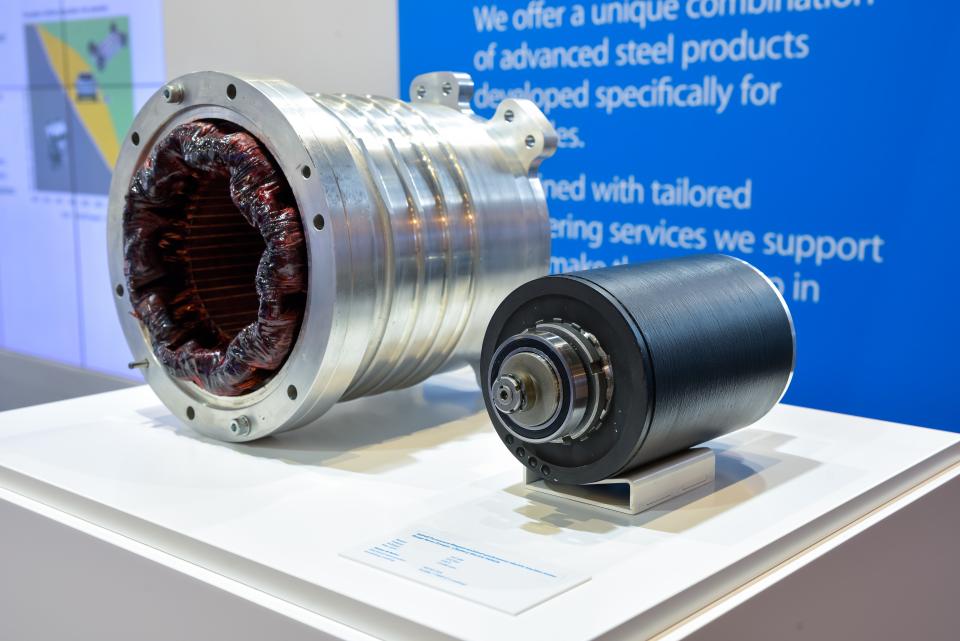In today’s world, sustainability is much more than a mere trend. It has evolved into an environmentally conscious way of thinking, acting and living. Now, if we look at the electrification of the automotive industry, we see that the shift is happening fast – and it should be. This, however, puts an enormous amount of pressure on the automotive industry to rapidly improve the performance, costs, and overall sustainability of EVs. But the responsibility does not only lie with the manufacturers alone. A successful transition to electrified vehicles calls for a close collaboration between all partners of the supply chain. Only then can we achieve our shared goal of reducing our carbon footprint and making electric cars accessible to a wider audience.
So, let’s take a closer look at one of the key components when it comes to improving the performance of EVs: the e-motor. When I am talking to customers there are a few issues that are often brought to my attention. They are looking for efficiency gains, power improvement or weight and size reduction. I fully understand that this is what is most vital to them. Being able to interact with their experts on improving e-motor designs is what makes my job so interesting.
The role of electrical steel in the motor is of critical importance, which cannot – and should not – be underestimated. By having an open dialogue with our customers at an early stage of the project we try to create an understanding of the challenges they are facing and, if possible, come up with a tailored solution. Whether related to the type of motor, the best e-steel or coating to be used or support with CAE, we always want to make sure that our materials can be adapted to their design requirements. So far, this strategy has proven successful, and we have been able to meet most challenges in finding ways to optimize our steels for an even better motor performance. When having these discussions early in the process, we do not only learn about current requirements, but also what’s ahead of us five to ten years from now. I do take this back to our production team, so they are in a position to continuously improve our product lines. After all, the goal is to make our portfolio match or even exceed current requirements. In addition, I address the future needs with my team members in R&D in order to try to be always one step ahead.
Our Hi-Lite electrical steel product range offers a variety of grades to suit the needs of specific e-motor designs. It is constantly being further developed to support even more advanced motor concepts in future generations of electric vehicles. As a result to our efforts, Hi-Lite steels have become stronger and we have been able to improve magnetic performance in order to facilitate even higher rotational speeds and torque and power densities. The improvement in magnetic performance thus result in using thinner gauges, which brings certain challenges. Thinner gauges are more difficult to cut and stamp and to assemble them into high-performance motor components. We tackle this issue by developing smart coating solutions like our Suralac9000 coating. This coating has two functions: it works as an insulator between the individual thin sheets (a critical aspect to prevent magnetic losses) and at the same time it serves as a bonding agent, producing rigid and efficient e-motor components in an easy and cost-efficient way.
What I have just described is only a very small glimpse into what product challenges we as a steel manufactures face daily. So, despite all the efforts so far, we are not there yet. We know the journey continues – and it should. New challenges peek around almost every corner. There are so many ways to reduce the overall footprint of e-motors. Just think about carbon emissions during production where Surahammars (Tata Steel’s production site for electrical steels) has a geographical advantage due to the low carbon intensity of grid electricity in Sweden. In the future there’s also the opportunity to increase the recycled content of our electrical steels.
It is important to acknowledge that all these new challenges are also chances for future developments. Chances that must be taken and faced head on. Chances we cannot manage by ourselves, but only in close collaboration with other partners in this big value-chain. Truth to be told, I am looking into the future with a very open mind and much confidence. We are already working with many OEMs and research Institutes but knowing the fast pace of change in this transition to electric vehicles I am excited to see what further partnerships lie ahead of us.
>> Return to the main Automotive blogs page




































































































































































































































